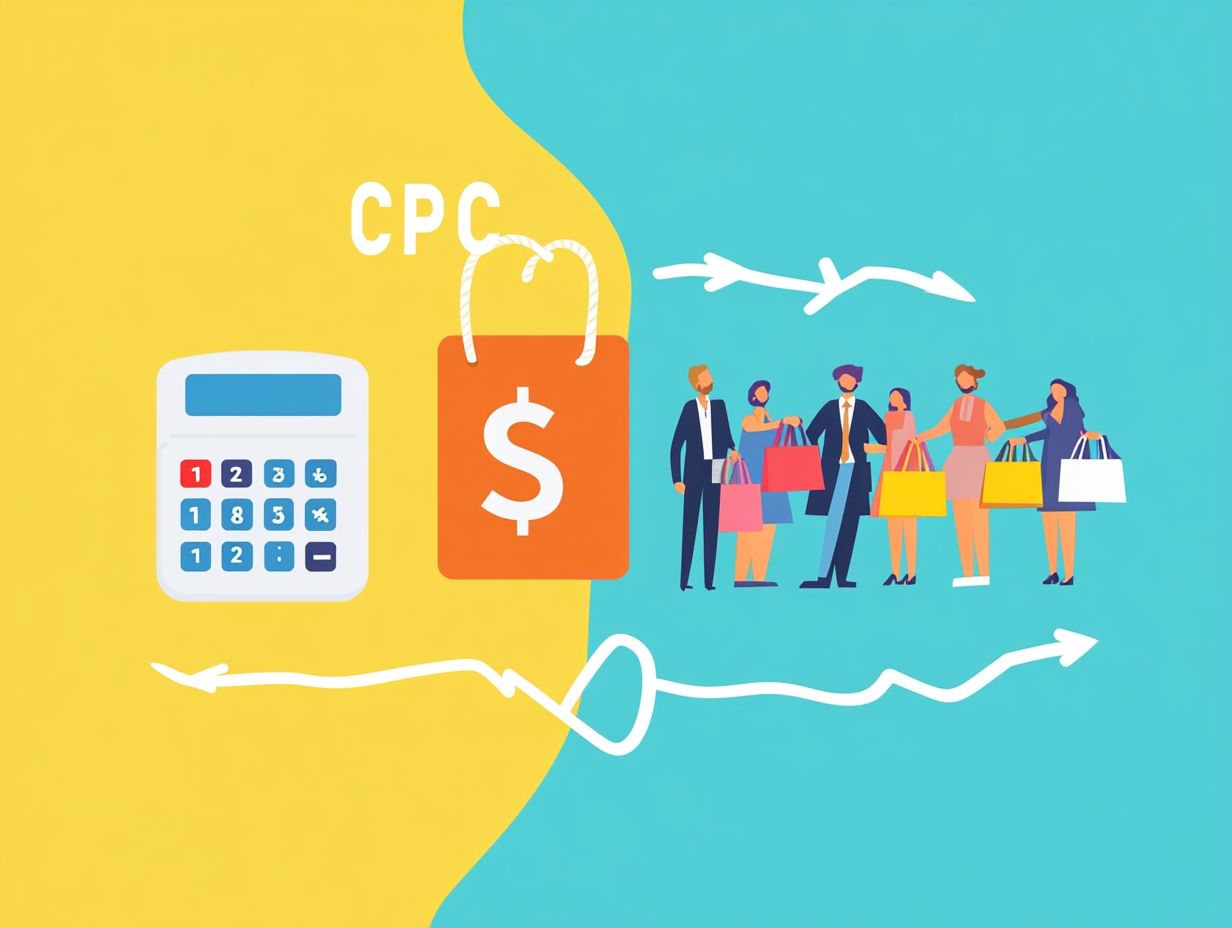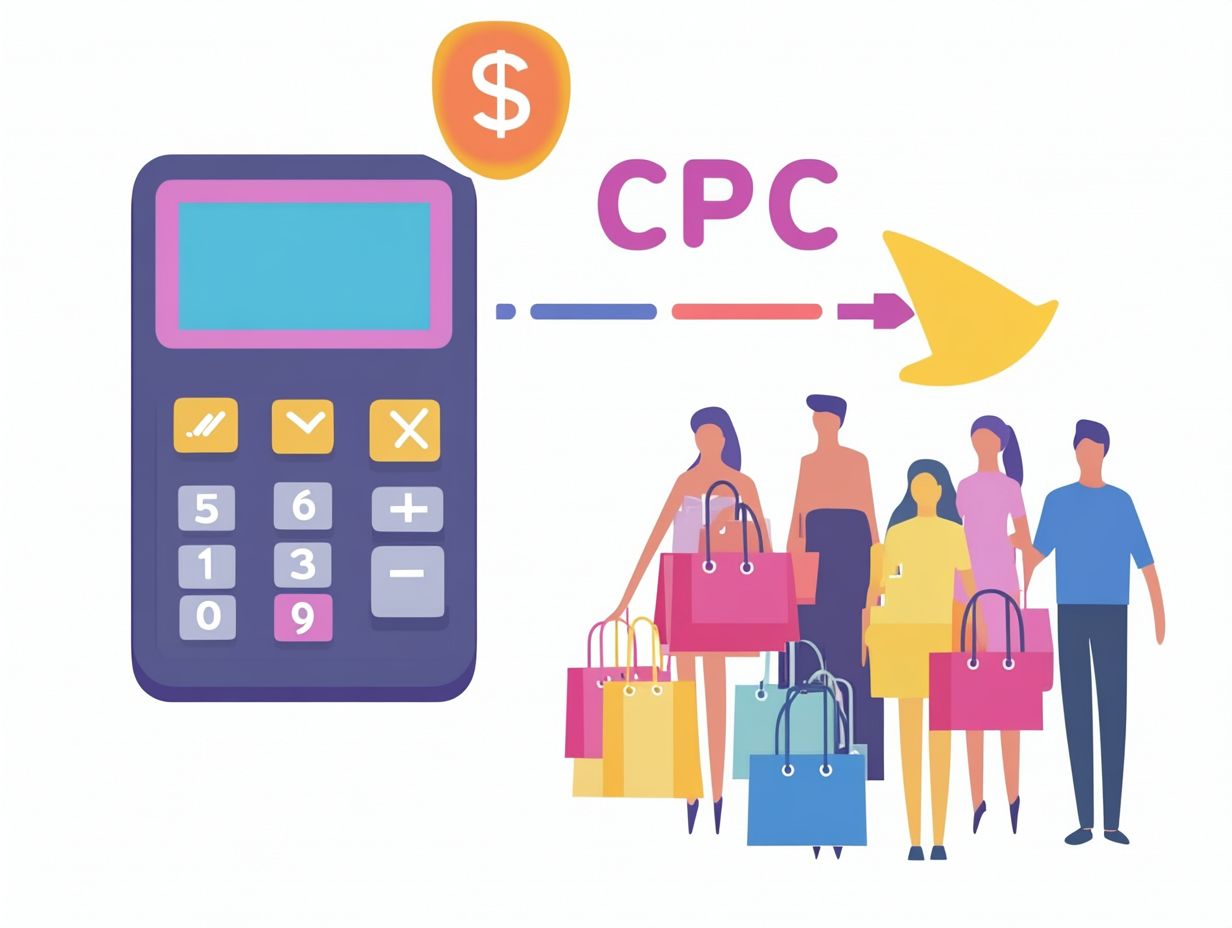What is the Difference Between CPC and CPA?
In the realm of digital advertising, grasping the intricacies of Cost Per Click (CPC) and Cost Per Action (CPA) can truly elevate your campaign effectiveness. Each model presents its own set of advantages and challenges, influencing how you connect with your target audience.
This article delves into the definitions and distinctions between CPC and CPA, thoughtfully weighing their pros and cons while offering valuable insights on when to implement each strategy.
You ll uncover essential tactics to optimize your advertising outcomes, empowering you to make informed decisions for your marketing endeavors.
Contents
Key Takeaways:

- CPC (Cost Per Click) and CPA (Cost Per Action) are two popular models used in online advertising. CPC charges for clicks, while CPA charges for specific actions taken by users.
- CPC allows advertisers to pay only for actual clicks on ads, but can lead to high costs and low conversion rates. Conversely, CPA ensures payment only for desired actions, though it can be more expensive and have lower click-through rates.
- The decision to use CPC or CPA depends on factors like budget, goals, and target audience. Careful consideration of these factors is essential for choosing the most effective model for your campaign.
Understanding CPC and CPA
Grasping Cost Per Click (CPC) and Cost Per Acquisition (CPA) is essential for boosting your digital marketing success. Both CPC and CPA serve as vital performance indicators, allowing you to assess the effectiveness and efficiency of your online advertising campaigns.
This knowledge aids in making informed decisions about spending and audience targeting. While CPC highlights costs associated with clicks on your ads, CPA focuses on expenses incurred when a user takes a desired action. This distinction provides valuable insights into the marketing funnel and the return on your investment.
Definitions and Differences
CPC (Cost Per Click) and CPA (Cost Per Acquisition) represent two distinct pricing models in online advertising, each tailored to meet specific marketing objectives.
CPC is about paying for each click on an ad it s your pathway to driving traffic to your site. In contrast, CPA focuses on conversion, measuring the cost of acquiring a customer who takes a specific action, like making a purchase. For example, if you run an e-commerce site, you might prefer CPA to ensure that each ad not only attracts clicks but also translates into sales, helping you optimize your budget for maximum returns.
If your goal is to boost website traffic, prioritizing CPC could be the best choice. This strategy provides visibility and brand exposure without tying immediate costs to sales. Grasping these nuances can significantly influence your campaign strategies and their outcomes.
Benefits and Drawbacks of CPC
Cost Per Click (CPC) advertising offers various benefits and drawbacks that should be carefully considered when crafting your online advertising campaigns. On the positive side, CPC models can attract high-quality traffic, increasing your revenue by engaging users more likely to click on ads.
However, it’s crucial to keep an eye on the financial implications of managing CPC costs and the challenges of achieving a favorable click-through rate. Balancing these factors can significantly influence the success of your campaigns.
Understanding these differences now can give you a competitive edge in your advertising strategy!
Evaluate your current advertising strategy based on the insights provided, and consider how CPC and CPA can best serve your goals.
Pros and Cons of Cost Per Click Advertising

Cost Per Click (CPC) advertising presents a mix of advantages and disadvantages that can significantly influence the success of your campaign.
On the positive side, it offers immediate visibility. You can appear at the top of search results or alongside relevant content almost instantly. This visibility is essential for capturing initial interest, particularly for promotions or time-sensitive offers.
You can easily measure results by tracking metrics like click-through rates (CTR) and conversion rates in real-time. This enables you to pivot your strategies quickly based on performance analytics.
However, there are notable downsides to consider. If your ad isn’t compelling enough, it might lead to low conversion rates. This ultimately wastes both your budget and effort.
For instance, an ad campaign with a CTR of 5% could still fall short if only a small fraction of those clicks convert into actual sales. This scenario underscores the importance of aligning your ad creativity with targeted segments to achieve optimum results.
Benefits and Drawbacks of CPA
Cost Per Acquisition (CPA) presents distinct advantages and challenges that you need to understand when strategizing your advertising campaigns. Unlike CPC, where you pay for each individual click, CPA focuses on the cost of converting a prospect into a customer who takes a specific desired action.
This makes CPA a helpful method for measuring how well you turn visitors into customers. However, be aware that CPA can be costly if your conversion rates don t meet expectations.
Pros and Cons of Cost Per Action Advertising
Cost Per Action (CPA) advertising offers a unique set of advantages and challenges that can significantly influence your marketing campaigns.
On the bright side, you stand to gain a higher return on investment. You only pay when specific actions occur, like a sale made or a lead captured. This approach enables you to target prospective customers with precision.
Imagine a company launching an exciting new software tool; they could tailor their ads specifically to reach tech-savvy audiences who are far more likely to convert.
However, challenges can emerge. You must maintain a keen focus on precise audience targeting and accurately measuring advertising metrics.
Without these elements in place, it becomes increasingly difficult to discern which strategies are truly driving conversions and which are depleting your resources. Striking a balance between these factors is essential for unlocking the full potential of CPA advertising.
When to Use CPC vs CPA
Determining when to utilize Cost Per Click (CPC) versus Cost Per Acquisition (CPA) is a crucial decision for marketers, as it significantly affects the success of their online advertising strategies.
Each model boasts distinct strengths, tailored to meet varying marketing objectives and campaign goals.
Key factors to consider include the specific action you wish to drive, your target audience, and your overall budget. These elements can heavily sway your choice between CPC and CPA.
Evaluate your advertising approach today to maximize your campaign’s success!
Factors to Consider in Choosing the Right Model

When choosing between Cost Per Click (CPC) and Cost Per Acquisition (CPA), consider several critical factors to ensure your strategy aligns with your marketing funnel.
Think about the nature of your campaign are you driving immediate traffic or focusing on long-term conversions? If your goal is to create awareness for a new product among a broad audience, CPC may boost visibility effectively. Conversely, if you’re targeting highly engaged users with specific conversion goals, CPA could yield better results, as it ensures every dollar spent is dedicated to acquiring new customers.
Understanding your target audience’s behavior is essential. Evaluating how potential customers interact with ads helps you identify which model is likely to succeed. Additionally, insights from historical data provide valuable context. Analyzing past performance allows you to see whether CPC or CPA has been more efficient for similar campaigns, enabling a more informed decision.
Maximizing Results with CPC and CPA
To maximize your results with Cost Per Click (CPC) and Cost Per Acquisition (CPA), adopt a strategic approach that focuses on improving your campaigns for better performance and efficiency.
Using targeted strategies significantly enhances your advertising metrics, attracting high-quality traffic while controlling costs. This meticulous optimization is essential for achieving sustainable growth and elevating the overall success of your campaigns.
Strategies for Optimizing Campaigns
Optimize your campaigns with targeted strategies for CPC and CPA advertising to enhance your performance metrics.
Begin your optimization journey with thorough keyword analysis. Focus on high-intent phrases that drive traffic and convert visitors into customers.
When adjusting your ad copy, prioritize engaging headlines and compelling calls-to-action that resonate with potential customers. Improving your audience targeting is also crucial; utilizing demographic insights and behavioral data enables you to reach users more likely to convert.
Consider a leading e-commerce brand that achieved a remarkable 30% increase in ROI by prioritizing data-driven decisions to refine their targeting and messaging. This example shows why analyzing performance metrics is crucial.
Frequently Asked Questions
Here are some common questions about CPC and CPA.
What is the Difference Between CPC and CPA?

CPC stands for Cost Per Click, while CPA stands for Cost Per Action.
What is the main difference between CPC and CPA?
The main difference is that CPC is based on the number of clicks on an advertisement, while CPA is based on a desired action taken by the viewer, like making a purchase or completing a form.
Which is better, CPC or CPA?
This depends on the advertiser’s goals. If the goal is to drive traffic to a website, CPC may be more effective. However, if the aim is to generate conversions or leads, CPA may be the better choice.
What is the pricing structure for CPC?
CPC is typically a fixed amount that the advertiser pays for each click on their ad, varying based on competition and ad placement.
How is CPA calculated?
CPA is calculated by dividing the total cost of the advertising campaign by the number of desired actions taken by viewers.
Can I use both CPC and CPA in my advertising campaign?
Yes, you can use both CPC and CPA in your campaign. This approach can be effective if you have different goals for different parts of your campaign, such as driving traffic to a website and generating conversions.






